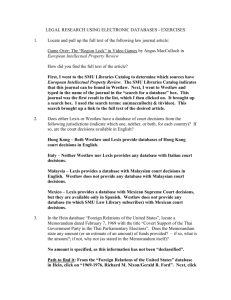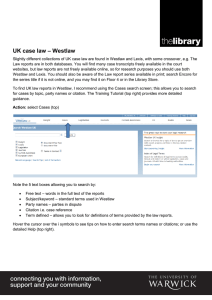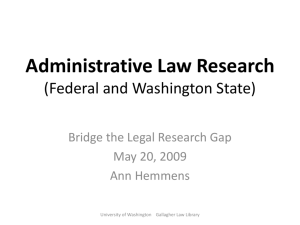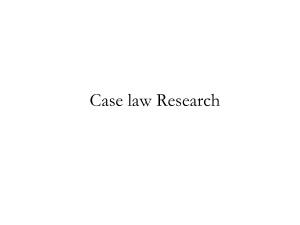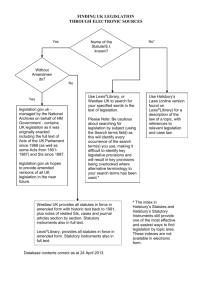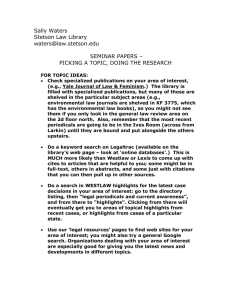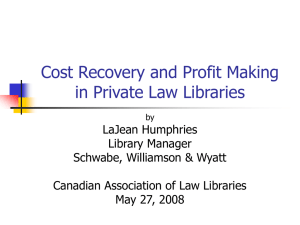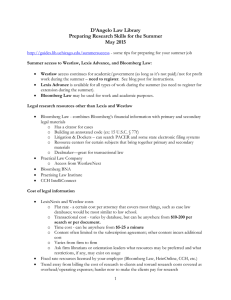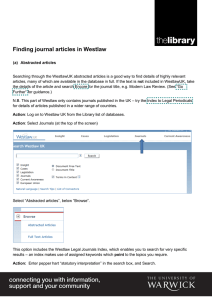Administrative Law Research Overview Administrative Law is
advertisement
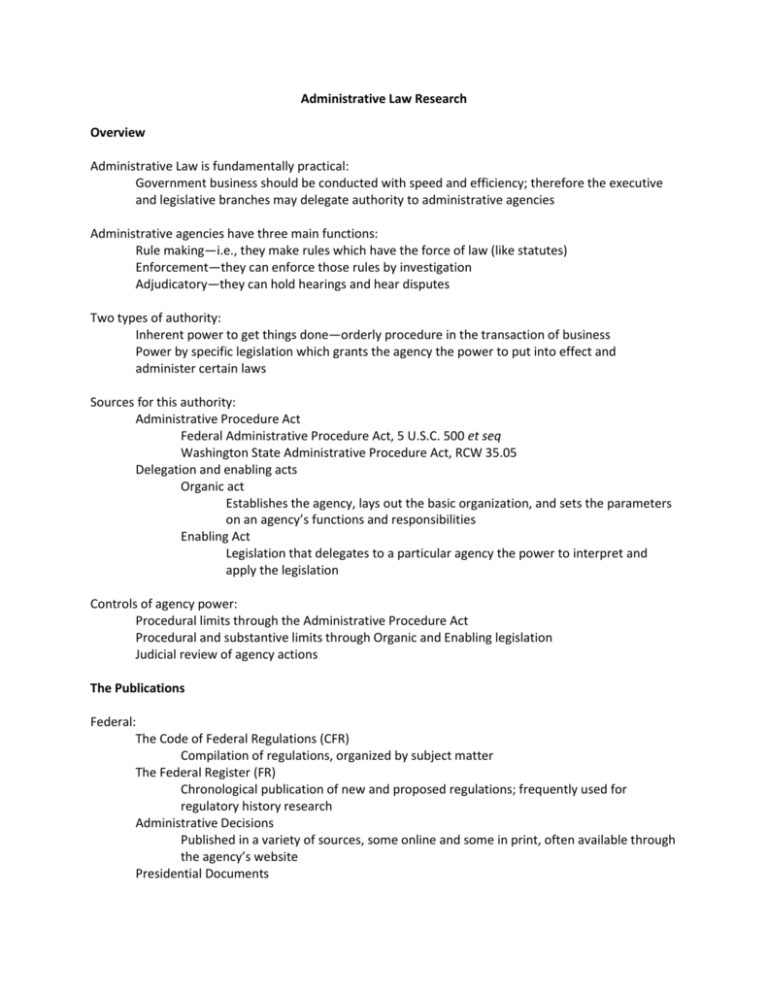
Administrative Law Research Overview Administrative Law is fundamentally practical: Government business should be conducted with speed and efficiency; therefore the executive and legislative branches may delegate authority to administrative agencies Administrative agencies have three main functions: Rule making—i.e., they make rules which have the force of law (like statutes) Enforcement—they can enforce those rules by investigation Adjudicatory—they can hold hearings and hear disputes Two types of authority: Inherent power to get things done—orderly procedure in the transaction of business Power by specific legislation which grants the agency the power to put into effect and administer certain laws Sources for this authority: Administrative Procedure Act Federal Administrative Procedure Act, 5 U.S.C. 500 et seq Washington State Administrative Procedure Act, RCW 35.05 Delegation and enabling acts Organic act Establishes the agency, lays out the basic organization, and sets the parameters on an agency’s functions and responsibilities Enabling Act Legislation that delegates to a particular agency the power to interpret and apply the legislation Controls of agency power: Procedural limits through the Administrative Procedure Act Procedural and substantive limits through Organic and Enabling legislation Judicial review of agency actions The Publications Federal: The Code of Federal Regulations (CFR) Compilation of regulations, organized by subject matter The Federal Register (FR) Chronological publication of new and proposed regulations; frequently used for regulatory history research Administrative Decisions Published in a variety of sources, some online and some in print, often available through the agency’s website Presidential Documents Proclamations and Executive orders are available through the Federal Register, the Code of Federal Regulations, the U.S. Code Congressional and Administrative News (USCCAN), and from GPO Access Washington: The Washington Administrative Code (WAC) Compilation of regulations, organized by subject matter The Washington State Register (WSR) Chronological publication of new and proposed regulations; frequently used for regulatory history research Administrative Decisions Published in a variety of sources, some online and some in print, often available through the agency’s website Executive Orders Published in the Washington State Register and available through the Newsroom of the Governor’s website Research Strategies Federal Regulations Try a Google search or look at the agency’s website to get started If you are starting from a statute or Federal act (you might have to find the particular statute first), look the statute up on Westlaw or Lexis and use their links to the related administrative materials, or use a print cross reference table If you are starting from an idea or concept, it’s almost always better to use the index on Westlaw or in print rather than a direct search If you are trying a direct search on either Westlaw or Lexis, try to use field or segment searching (for example, the title in the prelim field plus your search terms), or use a broader search followed by locates or focus that use fields/segments Once you have found a regulation, always go from the particular regulation to the table of contents to identify other related regulations. This may involve looking not just at the TOC for the sub-part, but for the whole title Federal Regulatory History (moving from Federal Regulations to the Federal Register) Look at the source note for the regulation in question; if you are on Westlaw or Lexis the FR citations should be hyperlinked (unless they are old)(in which case, look them up on Hein Online). Remember that the link is to the final regulations. Those final regulations should refer to an earlier Federal Register that included the proposed regulations Generally speaking, the discussion of the comments may come near the beginning of the federal register issue. Westlaw sometimes divides larger documents into multiple parts, so check to see if you are seeing the whole document or only a part of the document Find (ctrl-F) can be a helpful way of pinpointing relevant sections of larger documents Washington State Regulations Try a Google search or look at the agency’s website to get background information If you are starting from a statute, follow the cross references on Westlaw (none available on Lexis or on free site) If you know the agency that promulgates the regulation, it can be helpful to use the Table of Contents (TOC) for the WAC and browse for the relevant regulations There is no online index to the WAC—there is one in print Searching for a regulation directly, use Westlaw, Lexis or free site from state Once you have found a regulation, always back out and look at the table of contents for related regulations. This may involve looking at more than just the TOC for the subpart, but may involve looking at the TOC for the entire chapter or title. Washington Regulatory History (moving from Washington Regulations to the Washington Register) Look at the source note to find the Register citation. Remember this is where the final rules were published, and you may need to refer to the earlier related Register entries If you have used Westlaw to find the regulation, you’ll have to switch to either Lexis or the free site to find the Register entries On Lexis, use the Register citation as a search term within the Washington Register Database On the free site, if the register is recent (within about the last 5 years), there should be a hyperlink in the upper right hand side of the page of the regulation in the WAC indicating “agency filings” If there is no such hyperlink, you’ll need to use the WAC/WSR table available on the Washington State Register page on the Code Revisor’s site (http://www.leg.wa.gov/CodeReviser/Pages/Washington_State_Register.aspx) Remember to look in the appropriate year for the register citation Other Administrative Documents Agency websites are excellent sources for other administrative materials published by the agency, including hearings, decisions or other information about agency actions/policies Many agency publications can be found in print—try a library catalog search
